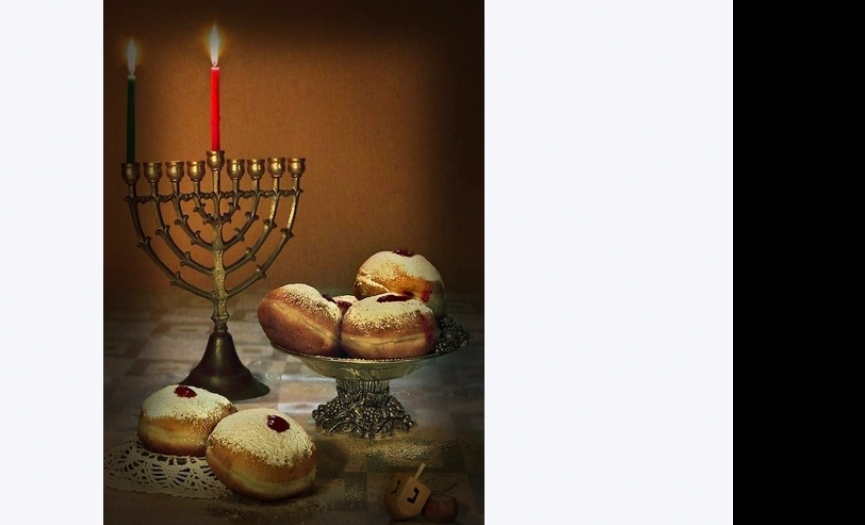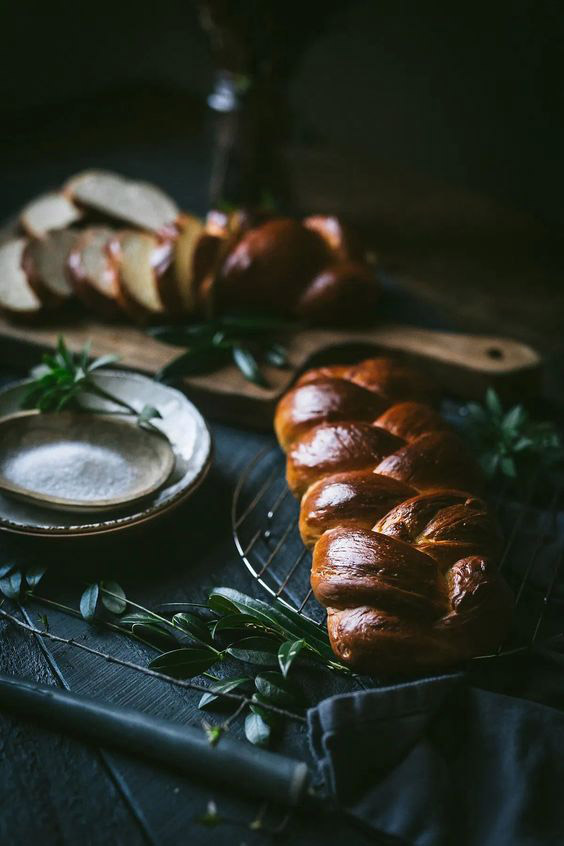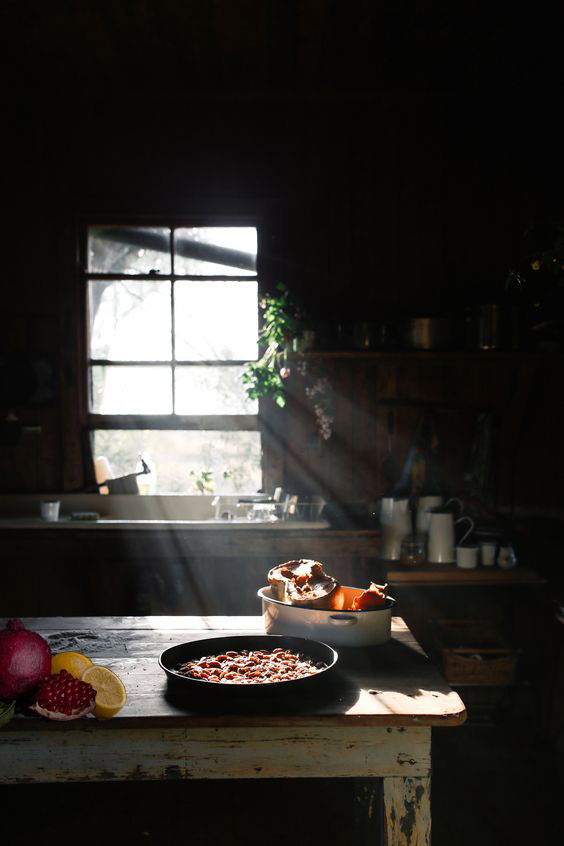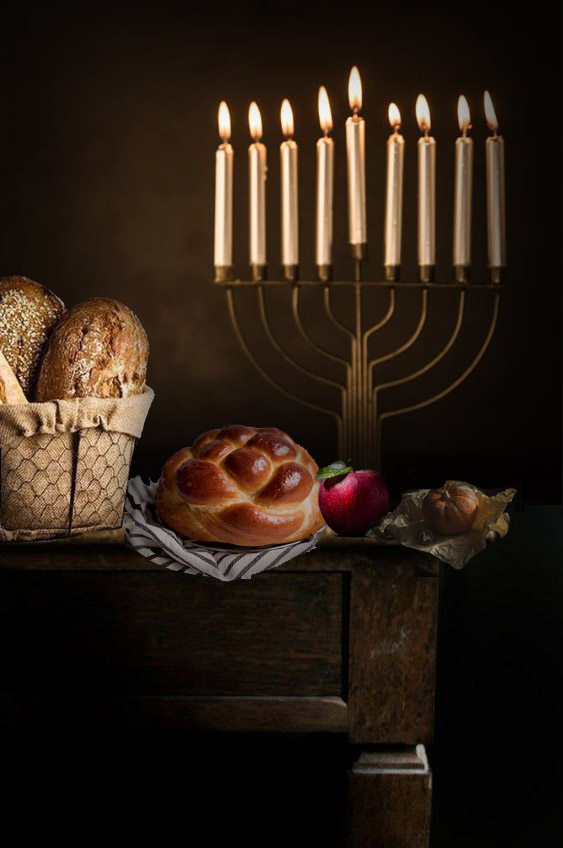
Dark and Moody Food Photography
"Would you like to take photos like paintings by Caravaggio and Vermeer? Dramatic photographs you take by creating shadows based on the contrast of darkness and light are a rising trend today."
There is a special depth in Jewish food culture
The table at the heart of a Jewish home represents much more than a place to sit and have dinner. A person unfamiliar with Jewish culture may not be aware of how important the dinner table is but, at this table, where a mixture of Jewish history and values live, spirits are skillfully combined within the delicious dishes prepared with deep emotions.
Not only the things around the table, but also the plates on the table, the textile products used, and the kitchen utensils represent these special bonds. There is a special depth in Jewish food culture. The dining table is also considered a way for those sitting around it to remember their past and gain that connection once again. So many specially prescribed dishes, accompanied by a multitude of historical stories told through shapes, tastes, and smells, each do their job to rekindle the Jewish community's passion for remembrance and reverence. I believe the spirit of these unique tables should be photographed with a special and artistic technique.

Capturing dramatic visuals in photography
Based on the ideas in visual arts, I think using the "dark and moody" food photography trend in imaging these dinner tables could be ideal for capturing a dramatic visual in the photo. “Dark and moody” food photography has a painterly quality. It evokes the emotions that are expected to arise in people. Let's remember the paintings of the master Italian painter Michelangelo Merisi Caravaggio, the father of the Baroque style. Caravaggio is considered one of the most original realist-naturalist practitioners of baroque art, with his strong use of light and shadow and his dramatic approach to pictorial arrangement. The paintings of Dutch Baroque painter Johannes Vermeer, known for his paintings depicting daily life inside houses, are also considered dramatic. Chiaroscuro is an Italian term that expresses the contrast between shadow and light. We see this in many dramatic paintings with light leaking from one corner, including paintings by Vermeer and Caravaggio. Pursuing drama in photography is necessary to reflect the events and the story.

Powerful and creative photos with Chiaroscuro Technique
Chiaroscuro, one of the best lighting techniques, was popular in cinema nearly a century ago and is still frequently used today. This technique basically involves positioning light and darkness relative to each other. Essentially, Chiaroscuro is two things: “a lighting technique and an art movement.” We can say that Chiaroscuro is the name given to using light and darkness in works of art. The word "chiaro" in this Italian word, which emerged with the Renaissance art movement, means "open, bright" whereas “oscuro” means “dark”. The word as a whole describes the dramatic effect created by using the contrasts of light and dark areas in a visual work. In chiaroscuro lighting, we see that the contrast is very distinct. While certain parts of the subject are illuminated, others are relatively dark, so they are not completely dark. Dark and moody food photography is a fascinating style that often uses natural light to create dramatic shadows, enhancing the richness and texture of the food.
Nowadays, moody, dark food aesthetics are taking the photography world by storm. Highly effective and dynamic, artistic, by using light in a measured manner and surrounding it with beautiful shadows, we can achieve an almost painting-like result that adds depth to the frame and evokes emotion, leaving a vivid, long-lasting impression.

How to take Dark and Moody Food Photos?
- In preparation, gather a small collection of images and examine them to find elements you find attractive. Decide what dramatic elements you want to see in your photo.
- Is the location you will be shooting outdoors or indoors? Prepare the necessary supporting elements for the design: plates, cutlery, linens, kitchen utensils, and the food you will shoot.
- Natural light is used as a light source in dark and moody photography. Natural light gives your photos a soft, breathing quality. This case which is especially useful in moody images, also affects the tone of food colors, making them look more natural and delicious.
- Subtle lighting behind your subject creates depth and further enhances the subject by separating it from the background. Described as “depth or separation,” this technique is perfect for adding drama to a meal and highlighting the delicate details of the dish.
- Use dark, matte surfaces and accessories to block, direct light, or create shadows. Choose dark tones, wooden surfaces, rusty metal, granite backgrounds, rustic, shabby chic accessories, and decor in dark colours, such as vintage plates, cutlery, baskets, containers, and fabrics, and always opt for the matte option that does not reflect light. Do not use shiny, reflective backgrounds or cookware.
- Avoid bright, intense colors and tones. If you want to add color, choose pastel, soft tones that absorb some of the light. You should prevent the light from bouncing from one surface to another so that you can take a less bright photo.
- Use negative space. Leave enough space empty. This allows you to play with shadows even more, without the risk of stealing attention from your main focal point. Negative space also helps create calm, relaxing images while highlighting the food composition.
Leave the final say to food, light, and shadows here. Create an original food story, and enjoyable shots.
Related News











